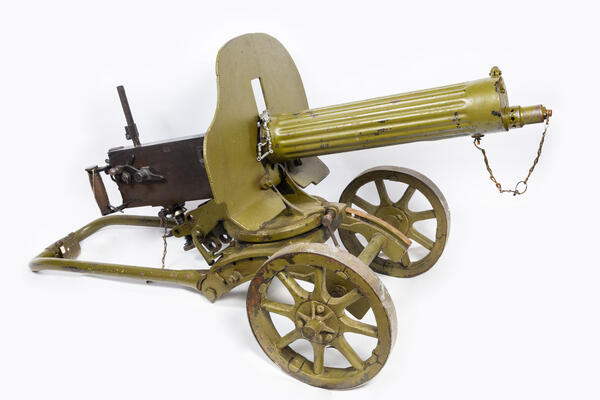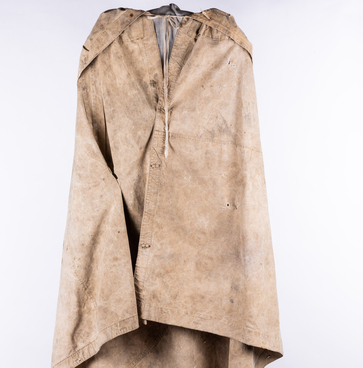The legendary Maxim machine gun was designed in eighteen eighty-four by the talented inventor and arms maker, Sir Hiram Stevens Maxim. But when he presented his work to the American military command, he was not taken seriously. Refusing to give up, the inventor headed for Europe, where he held several successful machine gun demonstrations in Britain, Austria, Italy, and Belgium.
Three years later, the gun was introduced in Russia as well. Its first field test took place in the spring of 1887; but just like the Americans, Russian military experts were not too thrilled by the Maxim gun’s capabilities. Its rapid rate of fire and complex structure were met with scepticism. For instance, Mikhail Dragomirov, a prominent Russian general, claimed that such rate of fire was completely unnecessary in modern combat. He insisted that a single bullet—not a whole burst of gunfire—should be enough to kill one opponent. But the nay-sayers' opinion was not enough to sway the Russian government, which soon signed the first contract for purchasing a dozen machine guns, designed to accommodate the Russian Berdan rifle’s calibre. The new guns were delivered to a military base in Saint Petersburg as soon as in eighteen eighty-eight.
And in nineteen o four, the TUla Arms Plant got an official license, allowing it to produce its own Maxim guns. Even so, this machine gun model did not gain widespread recognition until the start of the Russo-Japanese War. It proved unexpectedly efficient in live combat, and the Russian arms makers decided to give it an upgrade. More specifically, in nineteen o eight, the Maxim gun model shrank in size, and a wheel mount for infantry use was added to its design.
In 1910, this new and improved version became the official weapon of the Russian army. In the years the followed, the Maxim machine gun saw multiple other modifications, which ultimately gave it an even better efficiency and made it far less costly to make. For instance, the gun’s sight design was simplified in 1941, while the neck of the cooling system’s casing was widened. This way, snow or ice could be put inside the casing in the winter, helping cool off the weapon.
The Maxim machine guns were indispensable during both world wars. They were mounted onto armoured cars, trains, trucks, and the tachanka carts. The 1969 Sino-Soviet border conflict on the Damansky Peninsula was the last time when the Maxim machine guns saw combat action.
Three years later, the gun was introduced in Russia as well. Its first field test took place in the spring of 1887; but just like the Americans, Russian military experts were not too thrilled by the Maxim gun’s capabilities. Its rapid rate of fire and complex structure were met with scepticism. For instance, Mikhail Dragomirov, a prominent Russian general, claimed that such rate of fire was completely unnecessary in modern combat. He insisted that a single bullet—not a whole burst of gunfire—should be enough to kill one opponent. But the nay-sayers' opinion was not enough to sway the Russian government, which soon signed the first contract for purchasing a dozen machine guns, designed to accommodate the Russian Berdan rifle’s calibre. The new guns were delivered to a military base in Saint Petersburg as soon as in eighteen eighty-eight.
And in nineteen o four, the TUla Arms Plant got an official license, allowing it to produce its own Maxim guns. Even so, this machine gun model did not gain widespread recognition until the start of the Russo-Japanese War. It proved unexpectedly efficient in live combat, and the Russian arms makers decided to give it an upgrade. More specifically, in nineteen o eight, the Maxim gun model shrank in size, and a wheel mount for infantry use was added to its design.
In 1910, this new and improved version became the official weapon of the Russian army. In the years the followed, the Maxim machine gun saw multiple other modifications, which ultimately gave it an even better efficiency and made it far less costly to make. For instance, the gun’s sight design was simplified in 1941, while the neck of the cooling system’s casing was widened. This way, snow or ice could be put inside the casing in the winter, helping cool off the weapon.
The Maxim machine guns were indispensable during both world wars. They were mounted onto armoured cars, trains, trucks, and the tachanka carts. The 1969 Sino-Soviet border conflict on the Damansky Peninsula was the last time when the Maxim machine guns saw combat action.



